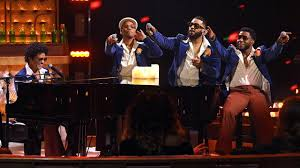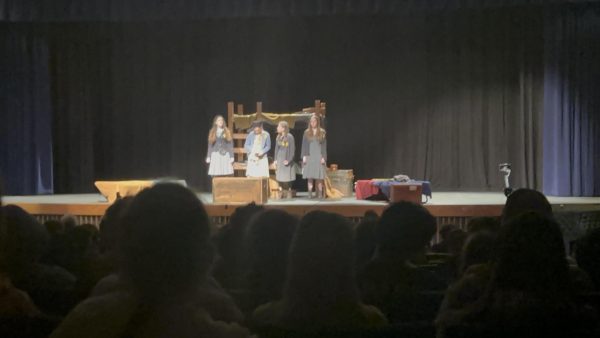‘Wise Guy Eh?’ ‘Soitenly!’
A Retrospective on the Classic Comedy Franchise, The Three Stooges

From left to right: Larry Fine, the “middle” stooge, Curly Howard, the dopey meathead, and Moe Howard, the gruff bully (Photo from 1943 short, “I Can Hardly Wait”)
Back in the day, comedy was largely predicated on pain. The frontrunners of classic television slapstick were none other than The Three Stooges.
Slapstick is a style of physical comedy that goes beyond the realistic boundaries of physical comedy. Fictional characters get into predicaments that either come about intentionally through violence or cartoonish freak accidents.
Stemming from a Vaudeville act in 1922 called “Ted Healy and His Stooges”, Moe, Larry, Curly, and Shemp, (we don’t talk about the Joes), won over the hearts of America during the early 20th century. After injustices dealt with Ted Healy as head of the act, the Stooges started their own independent act. Moe Howard (born Moses Horwitz) was born into a Lithuanian Jewish immigrant family, as the fourth born of five brothers. Shemp Howard (born Samuel Horwitz) and Curly Howard (born Jerome Horwitz) were brothers who took part in the act, older and younger than Moe respectively.
Larry Fine (born Lawrence Feinberg) met the Stooges between 1925 and 1928 and consulted with Shemp and Healy on being a replacement stooge for Shemp. Larry’s act proved to be well received. Film critic Leonard Maltin wrote in a book titled “The Great Movie Comedians: From Charlie Chaplin to Woody Allen”, “Larry is the least distinctive character of the trio, but he adds a pleasing touch by siding with either Moe or Curly, depending on the situation, thereby enabling him to show moments of lucidity as well as lunacy.”
Getting to a more subjective take on this series, it’s just hilarious. I mean the cartoonish nature of the violence is the reason it’s funny. If the show had Moe poking the eye out of one of his brothers and they started gushing blood, not too many people would find that funny. It’s the same reason Tom and Jerry is so beloved because it’s hilariously savage but the characters are nigh-immortal and the pain is played for jokes.
Comedy is said to derive from misery and so seeing another person getting hurt is just a lightened way of reacting to something that happens to all of us. It’s simply a relief because the character is okay.
The person who really got me into the Stooges was my father, Matthew Doucot, Sr. He had to say a few things about them, taken from his youth. “I remember just joking around with my brothers, doing the eye pokes” While he and my uncles had a good time, my grandmother found it to be obnoxious. “Three Stooges, upsetting mums from the 1930s to 2023.”
English Teacher Mr. Allen also shared a love for the comedy trio act and he shared a similar origin of interest with myself. “We used to get VHS tapes and watch it together. Over different Christmases, he (Allen’s father) would get the tapes and we would exchange them.” Like a portion of people who actually like good things, Mr Allen said that he grew up on the Stooges.
Certain social stuff in the films are partially progressive for the time but other things don’t age so well. On the side of being progressive, the Stooges had an episode of their show where they pretend to be misogynists, not to poke fun at women, but to poke fun at bigots and chauvinists. There are a few jokes that do not age well however. One of them is the massively rejected, in modern times, blackface, used for laughs.
While we can laugh at the good elements of a franchise, we have to acknowledge the bad and don’t have to take it with the good.
I think that, as early comedy sensations, Moe, Larry, Curly, and Shemp had a big influence on that form of media. They popularized slapstick and they had their roots in New York, America’ s most populous city. After breaking off from Ted Healy, the Stooges worked on their own terms. They hit it big and spread laughs that carry throughout generations, particularly with fathers, sons, and brothers. Although these men are long gone and in peace for almost a century , their influence will surely carry on in some form.






